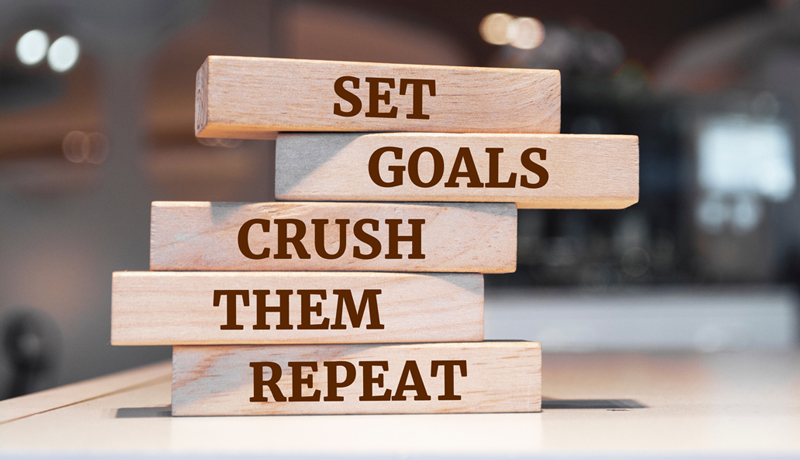
BY MIKE ZAPPONE
Editor’s note: The Entrepreneurial Operating System, or EOS, is a program that helps business owners get “unstuck” so they can manage and meet the challenges of their organization. The core tenet of EOS is having the right people in the right positions so that they are more productive, cohesive, and working toward the same goals. Professional EOS Implementer Mike Zappone is kicking off this series of articles with an intro to EOS and how it can work for your company as well. If you’re attending the CD/NLA Vegas Show this February 23-26, you can catch his session live on Wednesday, February 26.
Where are we going and how are we going to get there?
I find it ironic that the catalyst for starting a business is most often the first thing owners forget about. We did not wake up one day as a company owner; we were motivated to take the leap into becoming an entrepreneur. It was crystal clear to you, as if the path was highlighted with arrows all pointing in one direction. Fast forward to several months or years in business—when we are dealing with a million issues all at the same time—and the image you had of becoming an entrepreneur has been eclipsed by the overwhelming amount of stuff in your day.
The majority of that overwhelming stuff stems from managing our team. If running a business is pulling a weight, it often feels like no one else is pulling—or they are pulling in different directions. We all feel the problem, but what is the solution? Focus not just on what is in front of us but on what is most important to the company. We are all individuals who prioritize in unique ways. This is why it is important for the leadership to establish the long-term vision of where we are going and set the priorities for how we are going to get there.
 This is not a one-and-done exercise; it needs to be repeated and reinforced at every possible opportunity. Be prepared to repeat yourself because the message you send and the message that is heard are often very different.
This is not a one-and-done exercise; it needs to be repeated and reinforced at every possible opportunity. Be prepared to repeat yourself because the message you send and the message that is heard are often very different.
It’s something referred to as “Thump Thump,” which is based on a study done by Stanford University and written about in the book Made to Stick by the Heath brothers. This was a study on communication where college students sat across from each other and used their fingers to tap on the table a list of songs that they were given. Each person tapped out the songs, and the other listened and tried to guess the song. These were all common songs such as Happy Birthday and Twinkle, Twinkle Little Star. In the end, the listeners only identified just over 2 percent correctly!
What’s fascinating about this study is that most people assume the listener would identify more. What’s equally interesting is that the tapper, when tapping the song, hears it in their head in pitch-perfect form and is shocked that the listener can’t identify the song. The point is this: As a leader, when you are communicating your message, you see the message in vivid color and in crystal-clear detail, and it sounds pitch-perfect in your head. Then later, you’re surprised the listener didn’t clearly get or hear the message you were delivering. The truth is, most of the time the listener is hearing something similar to the monotone tapping on the table, or “Thump, Thump,” as it is now known in the EOS world.
This is why we need to take every opportunity to repeat the vision: where are we going and how are we going to get there.
Setting the vision does several things for business owners:
❱ It will ensure that your entire team is pulling in the same direction.
❱ Keeps your focus on tasks that are related to reaching the goal or destination.
❱ Helps you avoid the shiny objects that often distract and dilute your efforts.
When working with clients on vision building, I use the analogy of a road trip. We get in the car with a destination in mind and type the address into the GPS, which plots our route and estimates our arrival time. You had a destination in mind when you started your company—but do you remember what it was? Is that still the place we want to go? Does the route look good, or do we want a mix of highways and backroads?
 What is our long-term goal, up to 15 years out? Is this goal realistic? What would need to be true for this to happen? Let’s prove the vision and ensure it is both attainable and aspirational. Once we have the framework for the long-term goal, including revenue, date, and key things that need to be in place for it to be attainable, we start to break it down into smaller pieces.
What is our long-term goal, up to 15 years out? Is this goal realistic? What would need to be true for this to happen? Let’s prove the vision and ensure it is both attainable and aspirational. Once we have the framework for the long-term goal, including revenue, date, and key things that need to be in place for it to be attainable, we start to break it down into smaller pieces.
In 10 years, we want to be here and need the following in place to make this happen. Where do we need to be in three short years from now to ensure we are on the right trajectory to reach our goal?
The next step is breaking it down into the next 12 months. This is where you see your vision starting to become reality. What do we need in the next 12 months to be on track for our 3- and 10-year plans? Highlight the most important items, and then divide them into 90-day segments.
If we tell someone just starting their career that they need to fund their retirement, it may be great advice, but it is often too far out to be perceived as reality. If we break it down as outlined above, we can apply focus to the next 90 days and ensure that our team is all focused on completing the most important tasks in smaller, attainable, and very near future items.
Steven Covey, businessman and author of several books including The 7 Habits of Highly Effective People, highlighted the concept of “rocks” as goals in his time management philosophy. Rocks represent the most important things to achieve success, pebbles represent our everyday roles and responsibilities, sand is the minor daily tasks, and water is the unimportant distractions and redirections. If all our time in a day were represented by a cylinder, most people would fill the cylinder with water, sand, and pebbles first, leaving no room for the rocks. If we reverse the order and put the rocks in first, then the pebbles will fill the space between the rocks, then the sand fills the space between the pebbles, and lastly, the water fills the rest, allowing us to fit everything into our cylinder of time.
Compare this to how you are currently prioritizing your workday and how your team is prioritizing their day. It is easy to see the opportunity for improvement. It all starts with where we are going and how we are going to get there. Break it down and focus your team on the most important things for success in the next 90 days. At the end of the quarter, review accomplishments, set priorities for the next 90 days, and jump back in.
I’ll leave you with this: The sun puts out billions of kilowatts of energy—if we stand outside too long, we risk getting a sunburn. A laser with only a few kilowatts can cut through steel. If we translate this to time, we do not have billions of kilowatts of energy to deploy and need laser focus to be effective. Setting the vision is the first step to supercharging your organization. [CD0225]
Mike Zappone is a former operator, industry consultant, and a professional EOS implementer. He can be reached at mike.zappone@eosworldwide.com.


